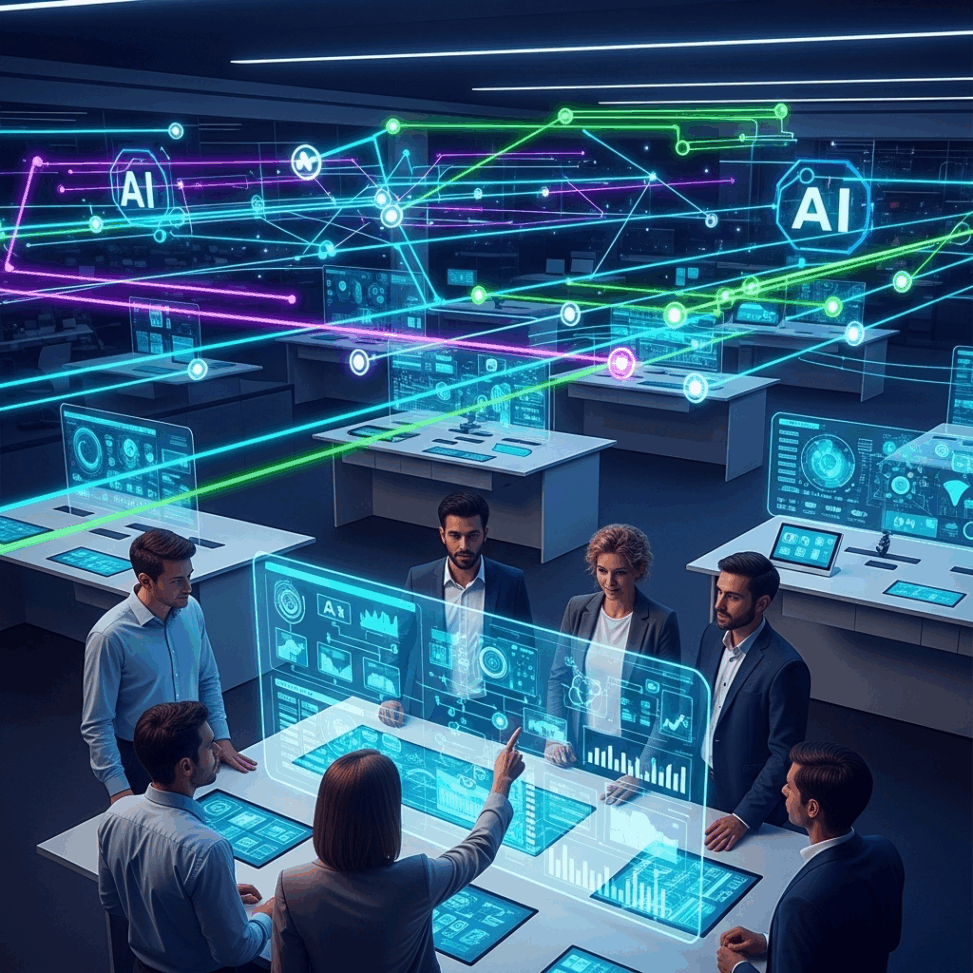The Dawn of Smarter Operations: AI Workflow Automation in 2024-2025
The pace of digital transformation continues to accelerate, with Artificial Intelligence (AI) at its core, reshaping how businesses operate. As we navigate 2024 and look ahead to 2025, AI is not just enhancing individual tasks but fundamentally redefining entire workflows. It’s moving beyond simple automation to intelligent orchestration, creating more efficient, adaptable, and innovative enterprises.
This evolving landscape presents immense opportunities for organizations ready to embrace the power of intelligent automation. From enhancing decision-making to revolutionizing customer interactions, AI is setting new benchmarks for productivity and strategic growth. Let’s delve into six pivotal trends that are shaping the future of AI workflow automation through 2024 and 2025.
1. Hyperautomation and Intelligent Process Automation (IPA)
Gone are the days when automation was a standalone solution. Hyperautomation, powered by AI and machine learning, is about orchestrating multiple technologies – including Robotic Process Automation (RPA), Business Process Management (BPM), and AI itself – to automate as many business and IT processes as possible. Intelligent Process Automation (IPA) takes this a step further by integrating AI’s cognitive capabilities to handle unstructured data, learn from interactions, and adapt to changing conditions. This means more resilient and end-to-end automated workflows that can handle complexity with ease.
2. The Expanding Role of Generative AI
Generative AI is rapidly moving beyond creative applications to become a powerful engine for workflow automation. In 2024-2025, we’ll see it deployed to:
- Content Generation: Automating the creation of reports, marketing copy, internal communications, and personalized customer responses.
- Code Assistance: Helping developers generate code snippets, debug, and optimize automation scripts, significantly speeding up development cycles.
- Data Synthesis & Summarization: Quickly extracting key insights from vast datasets and summarizing complex documents, streamlining research and decision-making processes.
This capability frees up human employees from repetitive, time-consuming content and data-related tasks, allowing them to focus on higher-value activities.
3. AI-Powered Decision Making and Predictive Analytics
AI’s ability to analyze vast amounts of data at speed is transforming decision-making within workflows. Instead of merely executing tasks, AI systems are increasingly being used to:
- Provide Real-time Insights: Delivering actionable intelligence for immediate operational adjustments.
- Forecast Outcomes: Predicting future trends and potential issues, enabling proactive interventions.
- Automate Complex Decisions: In areas like supply chain optimization, fraud detection, and resource allocation, AI can make autonomous decisions based on predefined rules and learned patterns, ensuring consistency and accuracy.
This shifts workflows from reactive to predictive, significantly reducing risks and improving strategic agility.
4. Enhanced Accessibility through Low-Code/No-Code Platforms and Conversational AI
The democratization of AI automation is a key trend. Low-code/no-code (LCNC) platforms are empowering business users, not just developers, to build and deploy automation solutions with minimal coding knowledge. This trend is amplified by:
- Intuitive Interfaces: Drag-and-drop functionalities and visual builders make automation accessible to a wider audience.
- Conversational AI: Natural Language Processing (NLP) and chatbots are enabling employees to interact with and initiate automated workflows using simple commands or natural language, making AI tools more user-friendly and integrated into daily work.
This accelerates adoption and allows departments to quickly respond to their specific automation needs.
5. Ethical AI, Governance, and Trust in Automated Workflows
As AI becomes more embedded in critical workflows, the focus on ethical considerations and robust governance frameworks intensifies. Organizations are prioritizing:
- Bias Detection and Mitigation: Ensuring AI systems are fair and do not perpetuate existing biases.
- Transparency and Explainability (XAI): Understanding how AI makes decisions to build trust and accountability.
- Data Privacy and Security: Implementing stringent measures to protect sensitive information processed by AI.
- Regulatory Compliance: Adhering to evolving data protection and AI ethics regulations.
Building trust and ensuring responsible AI deployment will be paramount for successful and sustainable automation initiatives.
6. Smarter Document Processing and Data Extraction
A significant portion of business data remains locked in unstructured documents – invoices, contracts, emails, and forms. AI-driven Intelligent Document Processing (IDP) solutions are revolutionizing how this information is handled:
- Advanced OCR & NLP: Going beyond basic Optical Character Recognition to truly understand and extract context from diverse document types.
- Automated Data Entry: Significantly reducing manual effort and errors in data transcription.
- Validation & Categorization: Automatically validating extracted data against rules and categorizing documents for efficient archiving and retrieval.
This trend eliminates a major bottleneck in many enterprise workflows, accelerating processes like customer onboarding, claims processing, and financial operations.
The Future is Automated, Intelligent, and Collaborative
The trends in AI workflow automation for 2024-2025 point towards a future where human ingenuity is amplified by intelligent machines. Organizations that strategically integrate these AI capabilities will not only achieve unprecedented levels of efficiency but also unlock new avenues for innovation and competitive advantage. The journey towards a hyper-automated, AI-driven enterprise is well underway – are you ready to lead the charge?

Leave a Reply